Social Media Community Management: Your 2025 Playbook
Social media community management means cultivating relationships between your brand and its audience on social platforms. Explore our 2025 guide.
March 25, 2025
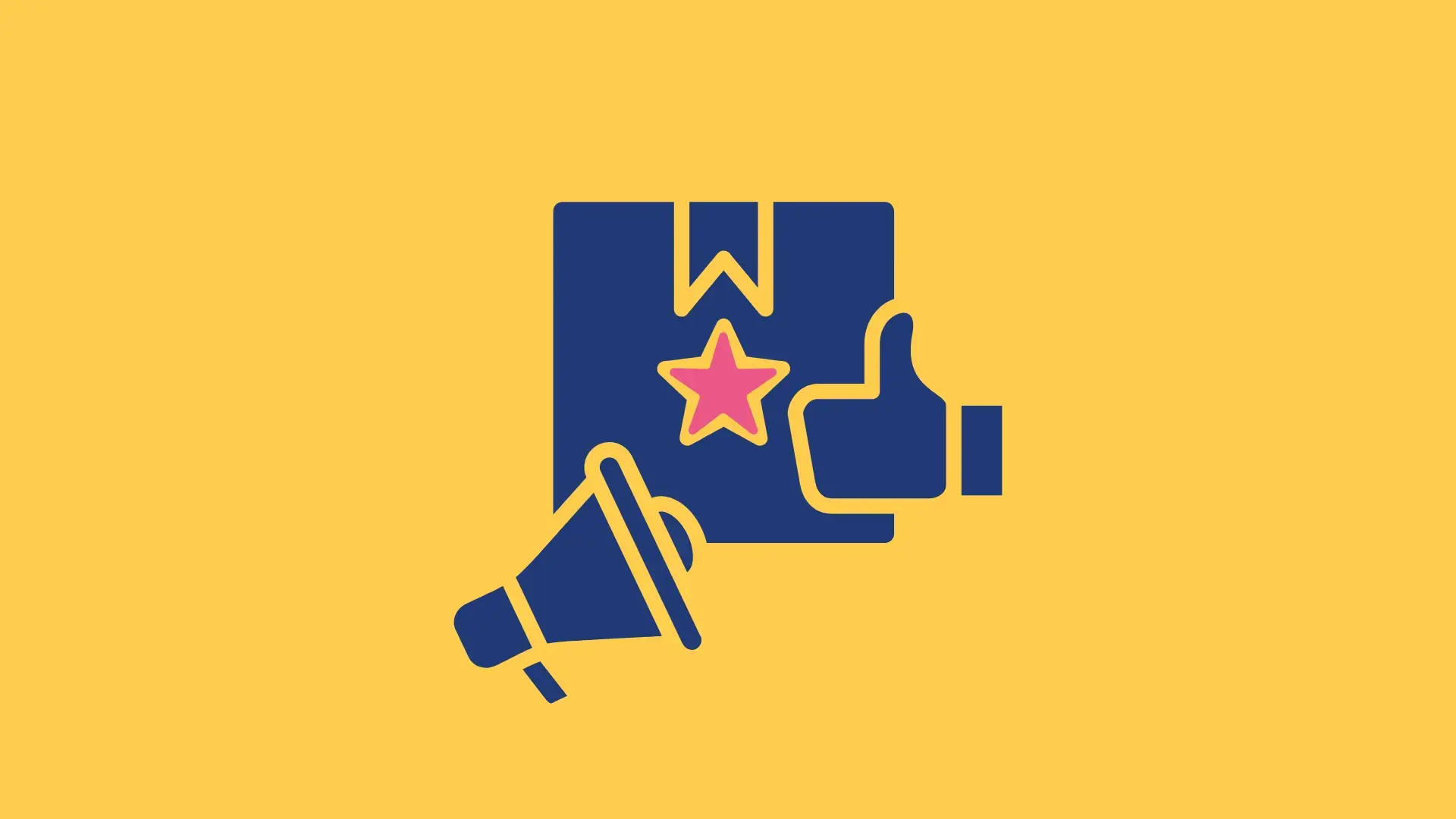
- What is social media community management?
- Who is a social media community manager?
- How can you use social media community management?
- Why is social media community management so important?
- How to create an effective social media community management strategy in 7 steps
- Practical tips for effective community management in 2025
- 3 successful social media community management examples for 2025
- Build an engaging social media community
Community management turns followers into active participants in your brand story.
With AI content flooding feeds, building genuine connections has never been so important for the actual bottom line.
Strong communities protect brands during crises, provide valuable feedback, and create organic reach that algorithms can't limit.
This guide gives you a complete playbook for social media community management in 2025.
We'll cover the fundamentals, then focus on practical steps and actionable tips to build thriving communities.
What is social media community management?
Social media community management is the process of cultivating relationships between your brand and its audience on social platforms—via public social profiles and closed community spaces like Facebook groups.
Just like this one by Peloton:
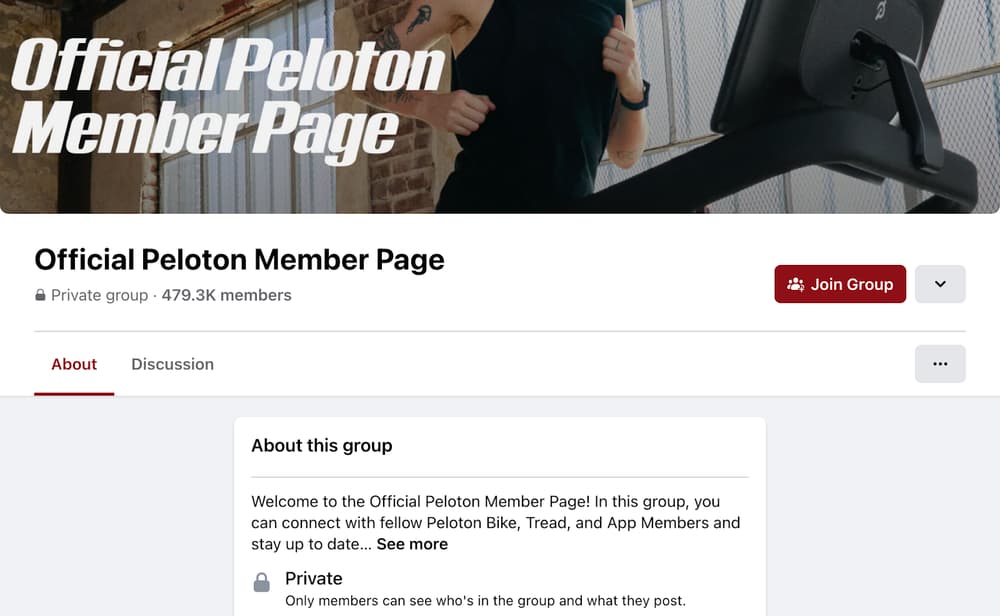
It goes beyond posting or responding to routine requests.
Effective community management involves daily engagement with followers, responding to comments, moderating discussions, and creating spaces where people connect with both your brand and each other.
The goal? Increasing brand loyalty, gathering valuable insights for your marketing and product strategy, and building a support ecosystem around your offerings.
For instance, Glossier’s team responds personally to comments and encourages conversations between users with similar interests.
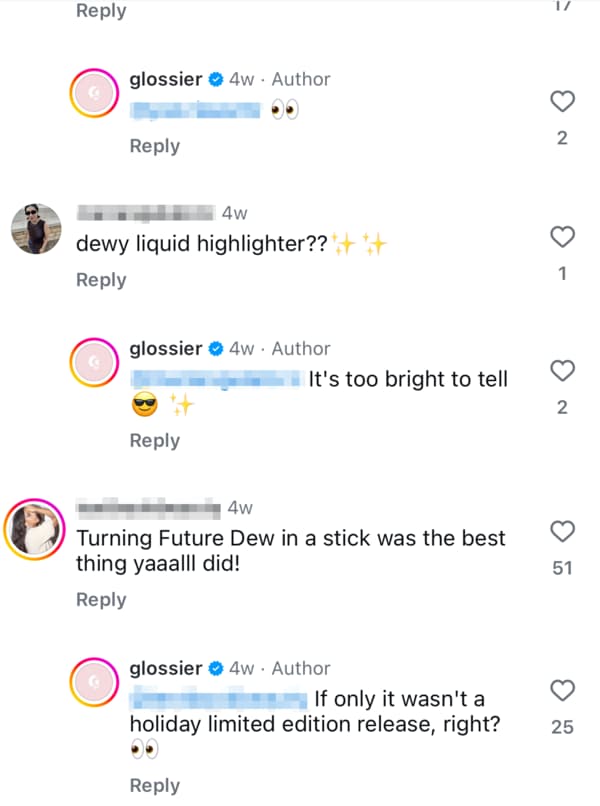
The brand also regularly incorporates customer feedback into product development. Here’s a fresh example of how they analyzed Instagram comments to turn a limited-edition holiday collection into a permanent product line.
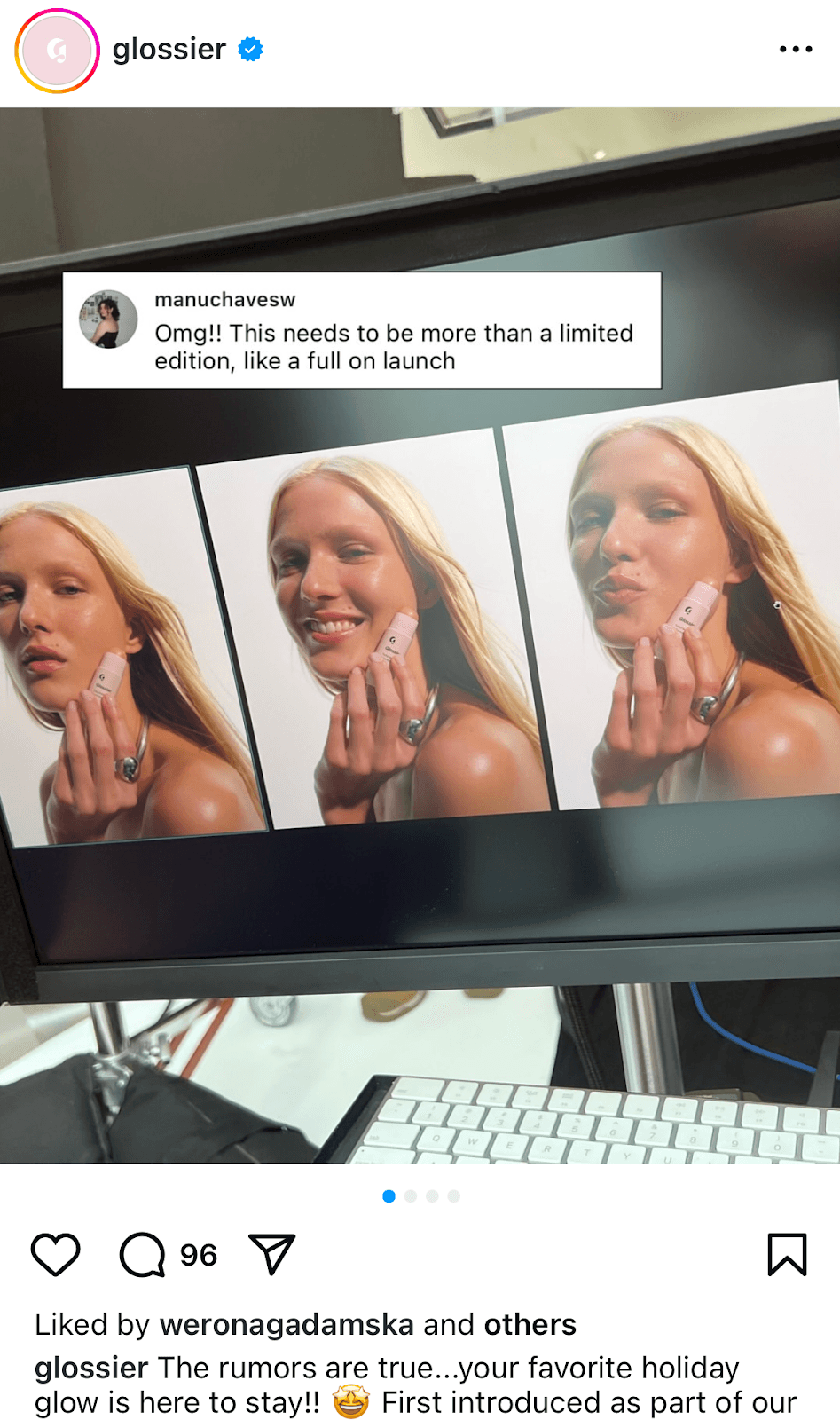
Social media community management vs social media management
Social media community management and social media management serve somewhat different purposes: the first builds relationships, the second distributes content.
Aspect
Community management
Social media management
Primary focus
Building relationships and member interactions
Content creation and distribution
Communication style
Peer-to-peer conversations
One-to-many broadcasting
Goals
Long-term brand loyalty and resilient brand reputation, engagement, and brand advocacy
Traffic, conversions, reach, impressions, and other immediate marketing strategy objectives
Metrics
Sentiment, participation rate, response time, engagement rate
Click-through rates, follower growth, impressions
Timeline
Long-term relationship building
Campaign-driven, often shorter-term
Content approach
Responding to community members' needs and sourcing UGC content ideas
Creating scheduled content
Team role
Engagement specialist, community manager
Content creator, campaign manager, social media manager
Crisis response
Direct engagement and resolution
Message control and redirection
The bottom line: While social media marketing focuses on attracting new audiences through content, community management nurtures existing audiences through conversation.
How to approach this? Successful brands usually need both.
Who is a social media community manager?
A social media community manager connects a brand with its online audience, building relationships and managing social interactions.
Unlike social media managers who focus on content calendars and campaign metrics, community managers prioritize conversation and engagement.
In other words, they build a digital space of like-minded people who connect to your brand’s core values.
Their core responsibilities include:
Monitoring and responding to brand mentions, messages, and comments in real-time
Moderating discussions to maintain a positive environment
Identifying and engaging potential brand advocates and influencers
Gathering customer support insights and sharing them with internal teams
Implementing community guidelines to ensure productive interactions
Using social listening tools to track broader conversations.
In reality, the lines are usually somewhere blurred. For example, Zaria Parvez, Senior Global Social Media Manager at Duolingo, demonstrates how social media roles often blend community management principles.
Despite her title, Parvez's breakthrough came from community engagement, not content creation.
"Our first success wasn't creating videos—it was commenting on other people's content," she

How can you use social media community management?
Social media community management can be implemented in several distinct ways, each serving different business goals. These include:
Customer service: Resolving customer issues publicly, creating knowledge bases, responding to product questions, and addressing user concerns in real time.
Product feedback: Gathering user insights, collecting improvement suggestions, testing new ideas with community members, and incorporating feedback.
Lead generation: Engaging with prospects organically, showcasing product benefits through discussions, and nurturing relationships with potential customers.
Brand loyalty: Facilitating connections between users, recognizing customer achievements, organizing community activities, and maintaining regular engagement.
Crisis management: Monitoring brand mentions and sentiment, addressing negative feedback promptly, and preventing social media crises.
For example, Duolingo’s community team creates entertaining content featuring their mascot, responds to comments with the same humorous tone, highlights user success stories and addresses product questions. All within their social media community.
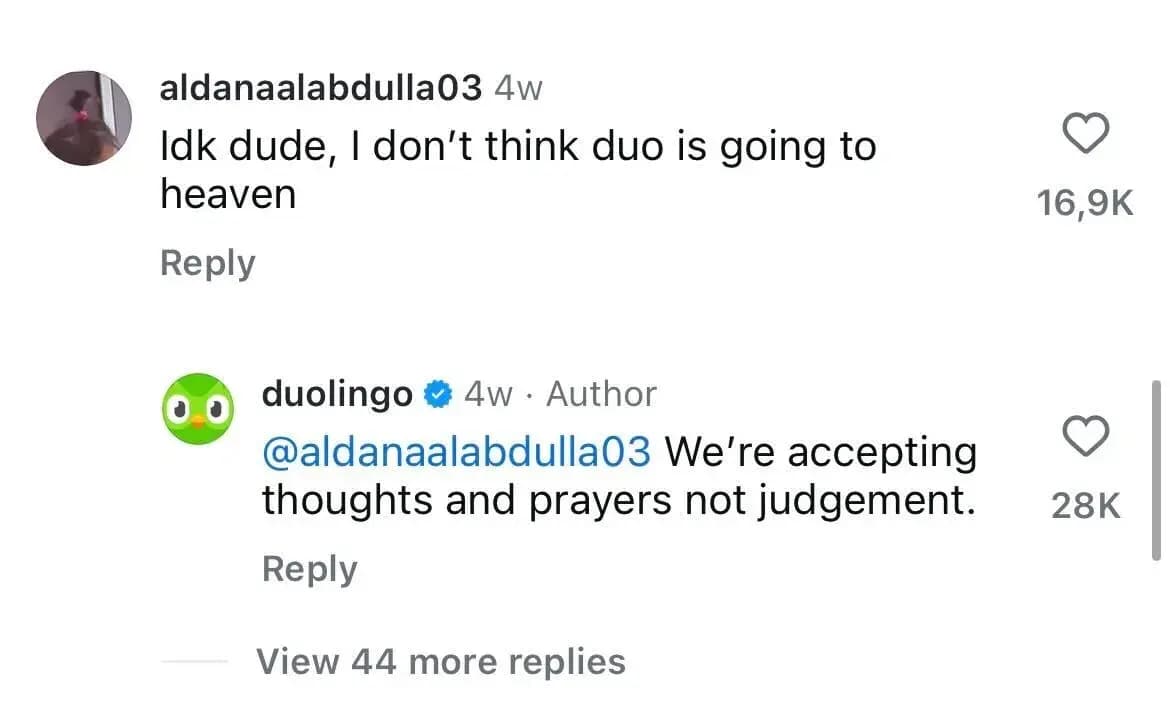
What makes their approach successful is consistency. Their community managers maintain the same playful brand voice across all interactions, making even support responses entertaining.
Why is social media community management so important?
Social platforms prioritize zero-click strategies, keeping users within their ecosystems. Meanwhile, AI-generated content is everywhere, making organic visibility even harder to reach.
In this environment, building direct relationships with your customers and cultivating a loyal audience is key to surviving (and thriving).
Here’s how social media community management delivers tangible business benefits:
Dramatically improves customer retention
Brands with active online communities experience a 53% higher customer retention rate.
This isn't coincidental—when customers feel heard and valued, they're much less likely to switch to competitors.
Brands with dedicated community managers also report a 70% increase in customer retention, thanks to proactive engagement and timely support.
This translates directly to higher customer lifetime value and reduced acquisition costs.
Creates crisis-resistant brand reputation
Strong communities act as buffers during PR crises.
Why?
Because loyal community members often defend the brand without prompting.
Proactively tracking brand mentions and sentiment is also key to acting fast and identifying signs of potential problems early in the process.
This protective effect is particularly important in the current social media environment, where one complaint can quickly spiral.
Provides unfiltered customer insights
Community management creates direct feedback loops that bypass traditional research limitations.
Social media users usually share their honest opinions about products, competitors, and industry trends.
These insights are more authentic than formal survey responses and arrive in real time, allowing you to adapt quickly to emerging opportunities or challenges.
Amplifies marketing reach through advocacy
Community members become natural brand advocates, extending reach beyond what paid advertising (or any marketing for that matter) can achieve.
Their recommendations carry more weight than brand messages because they're authentic and honest.
As channels like SEO and advertising become less effective, this organic amplification can truly move the needle for your business growth.
Builds competitive advantage through relationships
While products and features can be copied, strong communities create lasting competitive advantages.
The relationships built through community management are unique assets that competitors can't easily replicate.
In markets where products are similar, these relationships often become the decisive factor in purchasing decisions.
A perfect example of effective social media community management is Strava. Strava has successfully transformed its fitness tracking app into a thriving social network for sports enthusiasts.
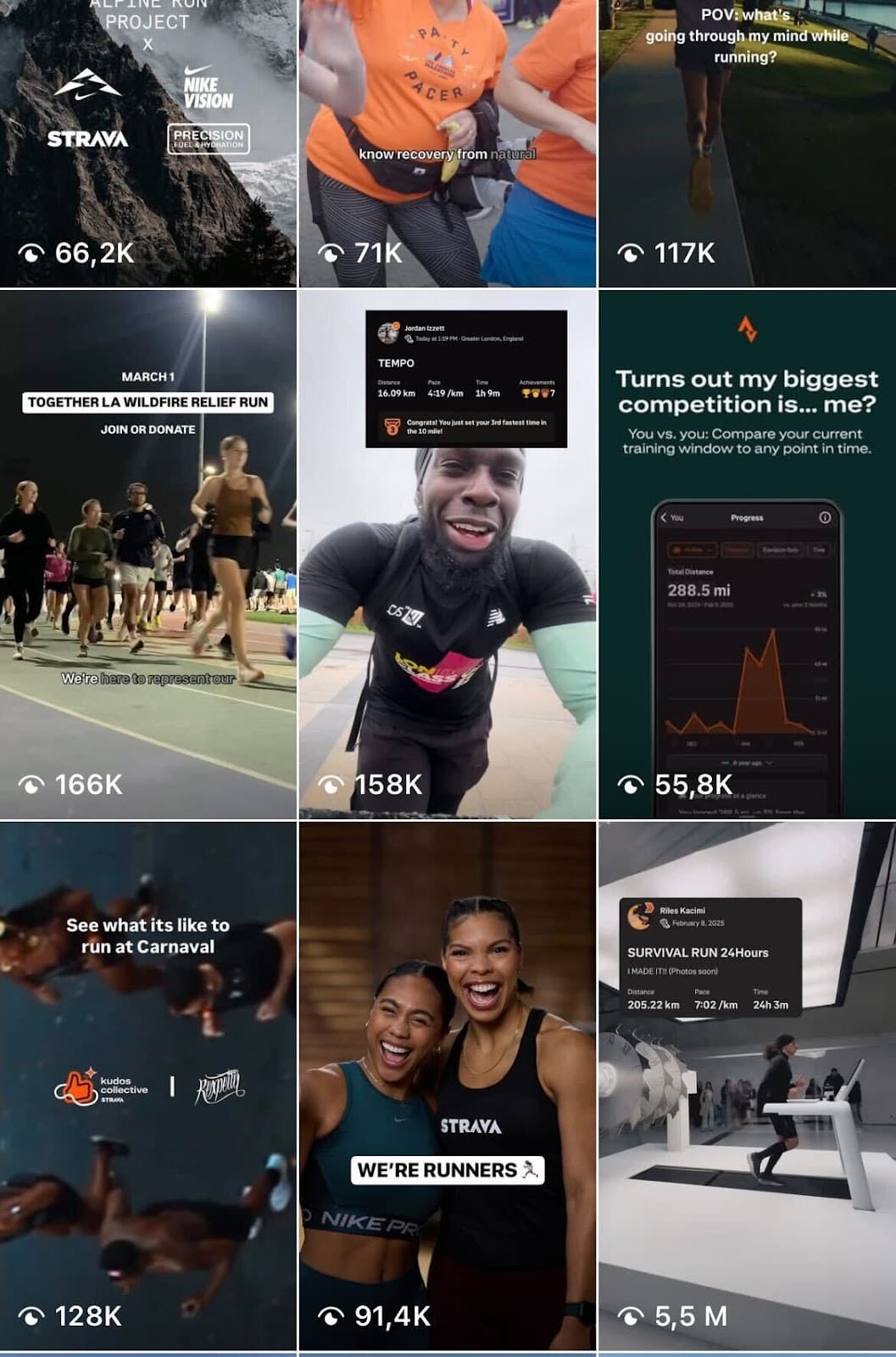
By fostering a strong community, Strava enhances engagement, boosts retention, and strengthens brand loyalty.
How to create an effective social media community management strategy in 7 steps
Building a successful community management strategy requires structure and planning.
Follow these steps to create an approach that engages your audience and delivers measurable business results.
1. Define specific goals and metrics
Start by establishing clear objectives that align with your broader marketing strategy.
Why this step is so important?
Because many skip it and then miss the real value of community management.
Your goals could look like this:
Increase revenue by 15% → Build a community of 500 active brand advocates who generate 20% of referral sales
Reduce support costs by 25% → Create a self-service community that resolves 40% of customer support issues without staff intervention
Improve product quality → Collect 100 actionable product improvement ideas from community members quarterly
Enhance brand reputation → Generate 50 pieces of positive user-generated content monthly from community members
Speed up innovation → Recruit 200 community members for product testing and feedback programs
For each goal, assign specific metrics.
For advocacy programs, track referral sources, conversion rates from community members, and revenue attributed to community referrals.
For support communities, measure solution time, self-service resolution percentage, and support ticket reduction compared to baseline.
2. Select and optimize your community channels
Next, choose social media platforms where your target audience spends time—based on the data from market and audience research.
Consider these factors when selecting platforms:
Demographic alignment with your target audience
Platform features that support your community goals
Resource requirements for effective management
Integration capabilities with your existing social media management tools
Growth potential and platform stability
If you're building closed communities alongside public social media profiles, determine the specific purpose of each.
For example, your main Instagram account might focus on brand awareness, while a private Facebook group could foster deeper customer connections and product discussions.
Following this logic, Instant Pot hosts a Facebook group where users share recipes and support each other in their culinary endeavors.
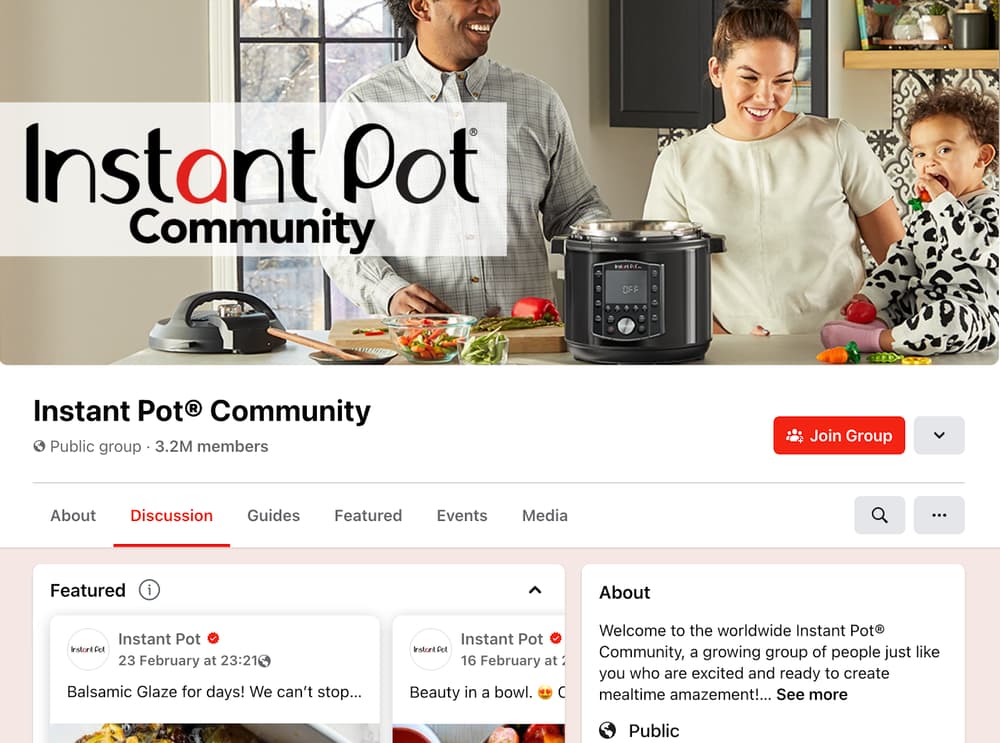
However, the brand also has active Instagram and TikTok profiles where it shares quick recipe videos, cooking hacks, and user-generated content.
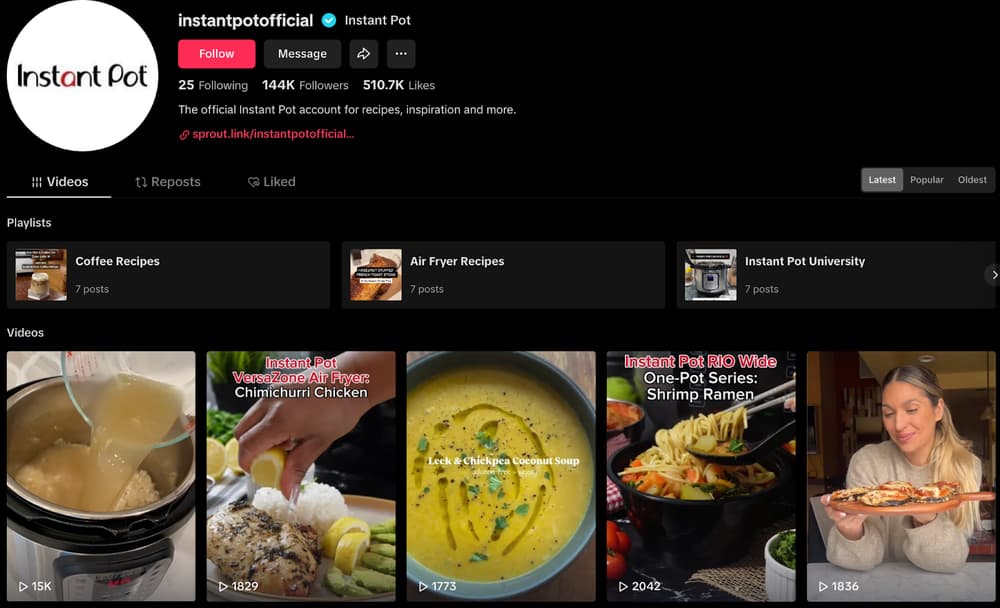
3. Create your moderation and engagement framework
Now, it’s time to develop clear guidelines that help your team consistently manage community interactions and represent your brand effectively.
Your framework should include:
Response protocols for different types of engagement (questions, complaints, praise)
Community guidelines that establish expectations for member behavior
Escalation paths for handling sensitive situations or crisis management
Approval processes for different content and response types
Defined roles and responsibilities for each team member
Brand voice documentation showing how to maintain a consistent tone
Response time standards (e.g., 2 hours for questions, 30 minutes for complaints)
For closed communities, add specific moderation rules like membership criteria, content review processes, and community-specific value propositions.
For example, here are some guidelines for Peloton Facebook community members:
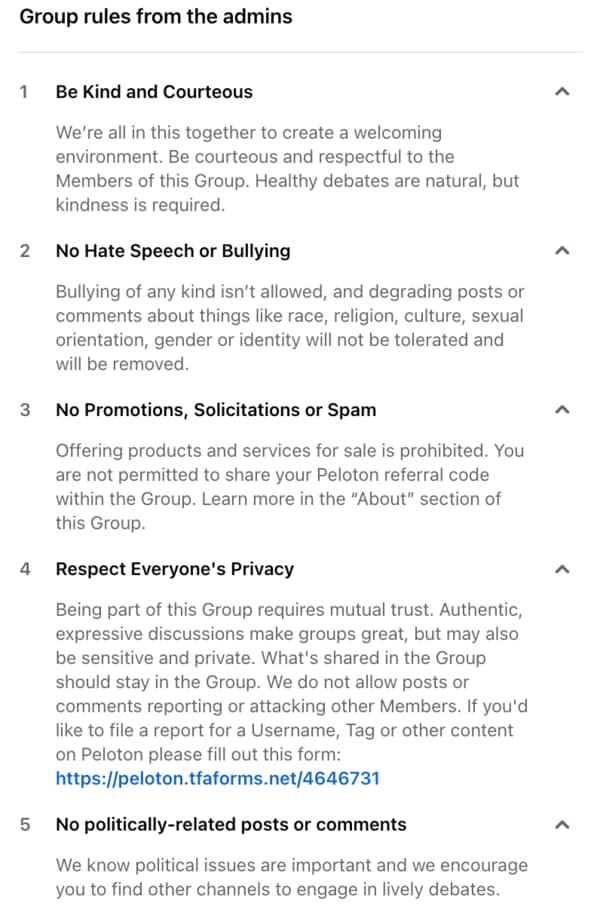
Then, document how moderators should facilitate conversations, when to step in, and how to recognize and reward valuable community members.
4. Develop an engagement content strategy
Next, create a content and posting plan that’ll help you spark conversations and build relationships.
For example, you could post:
Questions that invite opinions and experiences
Behind-the-scenes glimpses that humanize your brand
Polls and surveys that make members feel their input matters
User-generated content features and challenges
Live Q&A sessions with team members or industry experts
Here’s how Unbounce, a landing page builder, engages its LinkedIn followers with regular polls:
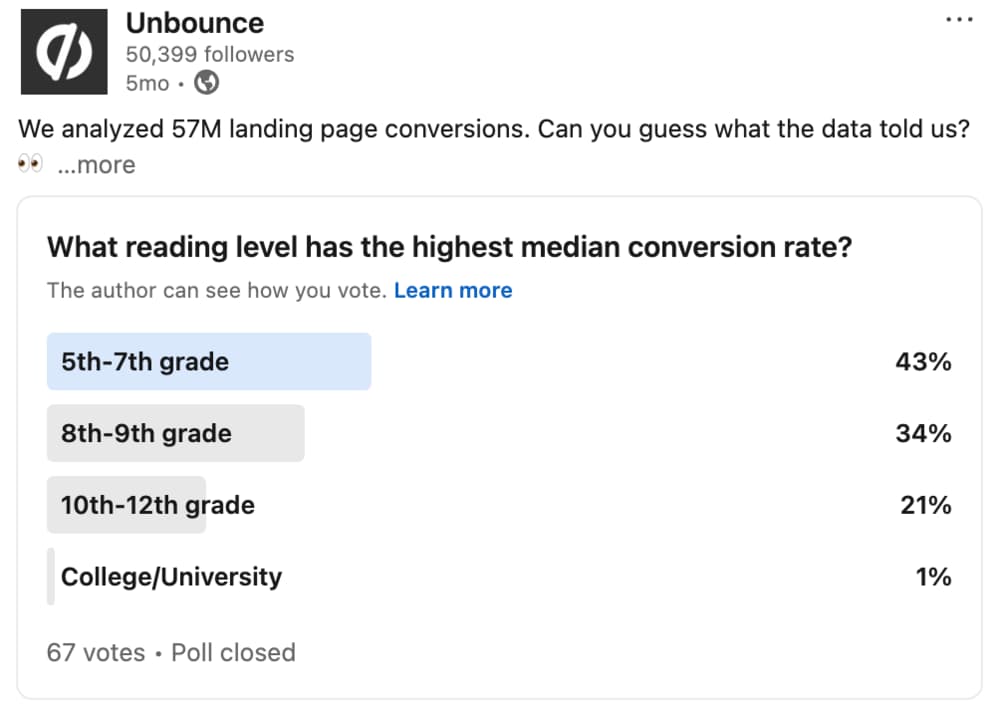
You’ll also need to maintain a healthy balance of product-led (e.g., 30%) and relationship-building (79%) content.
For each content type, document its purpose, ideal frequency, success metrics, and examples of what good execution looks like.
5. Leverage influencers and community advocates
Want to attract more community members organically?
Identify and activate key community members who can amplify your message and build deeper connections with your audience.
Your advocacy strategy should include:
Clear criteria for identifying potential influencers and advocates (e.g., members who consistently answer other users' questions)
Different tiers of advocacy with appropriate perks (e.g., basic, intermediate, and expert levels with increasing benefits)
Specific engagement protocols for different advocate types (e.g., product testers vs. content creators)
Recognition and reward systems that motivate continued participation (e.g., monthly community spotlight features)
Measurements to track advocate impact (e.g., support questions resolved, content engagement rates)
Training resources to help advocates represent your brand (e.g., brand guidelines, response templates)
Many successful brands have established formal advocate programs that recognize and reward their most engaged community members. They typically offer exclusive benefits in exchange for specific activities rather than direct payment.
For instance, Lululemon engages fitness instructors and athletes as brand ambassadors, providing them with apparel and inviting them to special events. In return, ambassadors share their experiences and promote the brand within their communities.
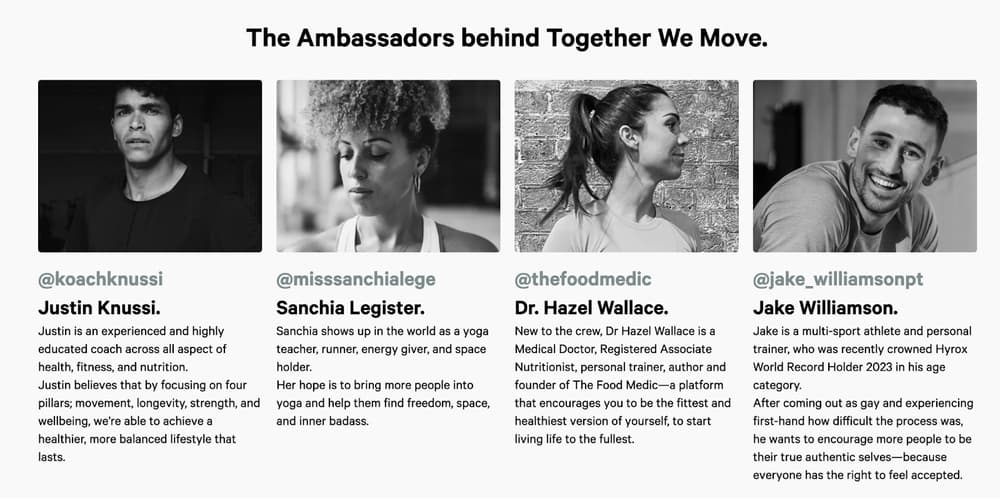
6. Establish feedback collection and implementation systems
However, your work doesn’t end with creating content and engaging users online.
One of the most valuable outcomes of social media communities is your access to unique data and insights.
For this, design a structured process for gathering, analyzing, and acting on this community feedback.
Your feedback system should include:
Regular community listening sessions (e.g., monthly themed feedback discussions)
Feedback categorization methods (e.g., product, service, content, and experience categories)
Clear routing protocols to send insights to internal teams (e.g., weekly reports to relevant departments)
Communication channels to inform members when their input leads to changes (e.g., "You asked, we delivered" announcements)
For instance, Red Hat publicly uses LinkedIn to announce product and feature updates they introduced by analyzing customer insights:
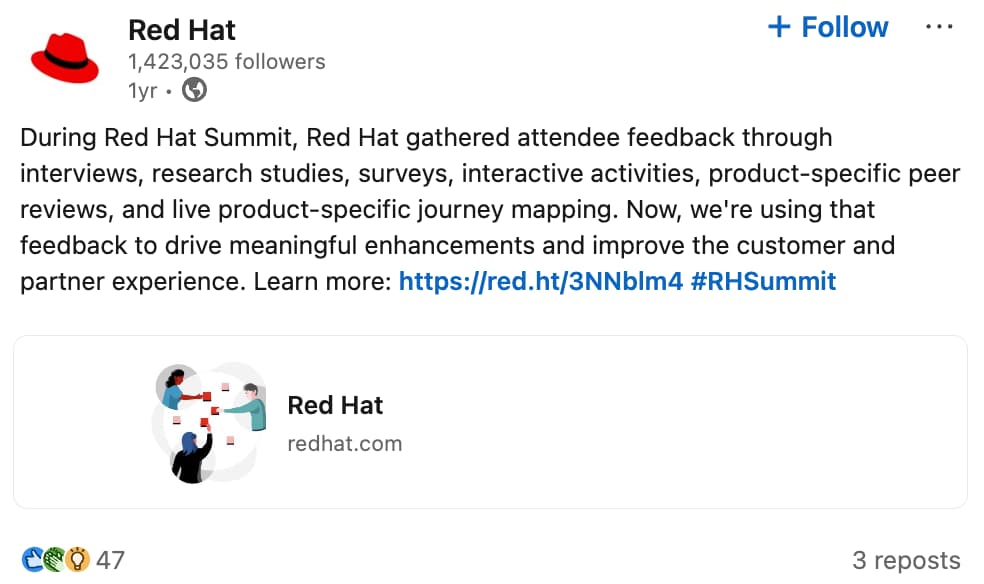
When community members see their feedback implemented, it increases their sense of ownership and loyalty.
It also helps shape your product, marketing, and business strategy based on real-world customer needs.
7. Analyze performance and continuously optimize
Finally, implement regular review cycles to evaluate your community's health and impact on business goals. Then adjust your approach based on data.
You could track:
Daily: Response times, new member joins, active conversation threads
Weekly: Engagement rates, sentiment trends, support cases resolved by community
Monthly: Content performance, community growth rate, top contributors
Quarterly: Retention rates of community members, support cost reduction, conversion metrics, sentiment over time
Annually: Overall ROI, community satisfaction survey, strategic planning for next year
To do it effectively, you’ll need a social listening tool like Talkwalker. It tracks conversations happening both within your communities and across the broader social landscape.
It also monitors sentiment in real time, identifies emerging trends, and measures the overall health of your community efforts.
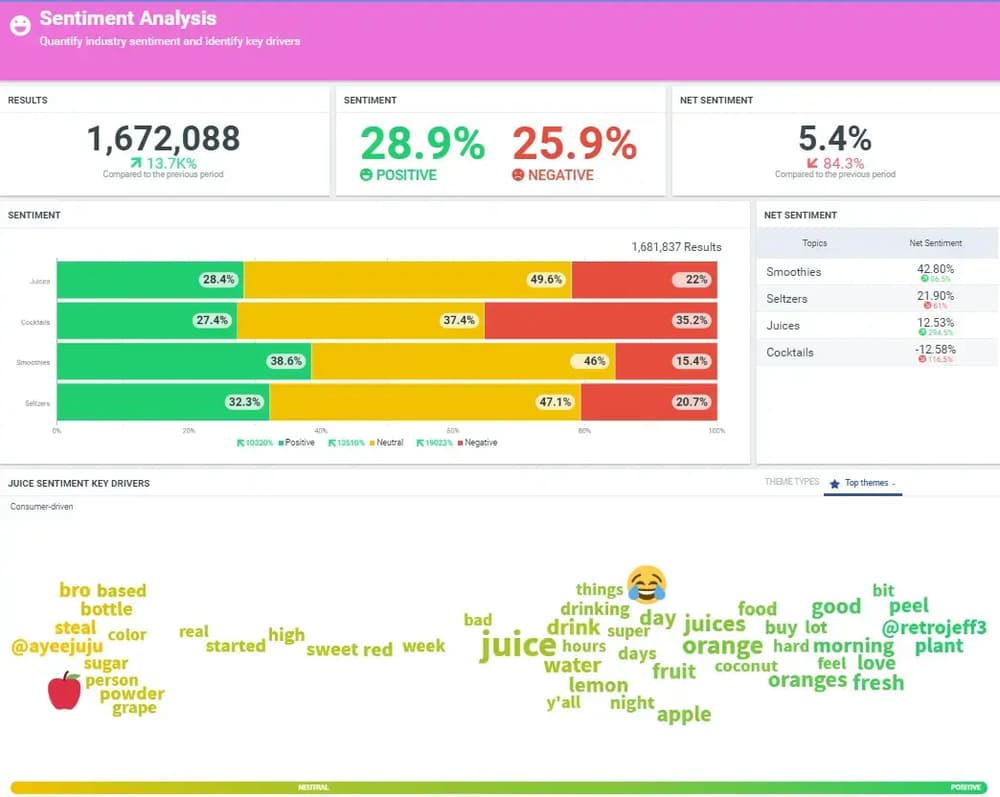
Practical tips for effective community management in 2025
These practical tips will help you build thriving online communities that deliver measurable business value.
Mix AI assistance with human connection
According to research, 85% of customer service leaders will explore or pilot customer-facing conversational generative AI solutions in 2025.
So, use AI. But do it the smart way.
Automate routine processes while preserving the human element. For example:
Use AI-powered moderation tools to flag inappropriate content for review
Use AI to handle routine customer support questions (platform features, business hours, basic troubleshooting) with tools like Gorgias
Conduct sentiment analysis and let AI analyze the key trends for you with tools like Talkwalker
Create response templates that AI can use for common scenarios while maintaining brand voice
Reserve complex issues, emotional situations, and high-value customers for your human team
Use AI scheduling and inbox management features to maintain consistent posting and handle incoming messages with tools like Hootsuite
The key is setting up clear handoff protocols. For instance, when sentiment analysis detects frustration or when a conversation reaches a certain number of exchanges, it should automatically be routed to a human team member.
Build exclusive closed communities
We already saw a few examples of closed communities that work well for various brands.
You can also build dedicated spaces where your most engaged customers can connect deeply with your brand and each other.
For instance, it could be a Facebook or a LinkedIn group. You can also move it away from social media and use a private Slack channel or a gated space on your website.
Here’s how to approach it:
Develop exclusive content calendars specifically for closed community members
Assign dedicated community managers who specialize in facilitating deeper conversations
Implement regular exclusive events like monthly AMAs with product teams
Set clear community guidelines that foster constructive conversation
For instance, LEGO Ideas is an online community where members submit product concepts, other community members vote on them, and popular designs potentially become actual products.
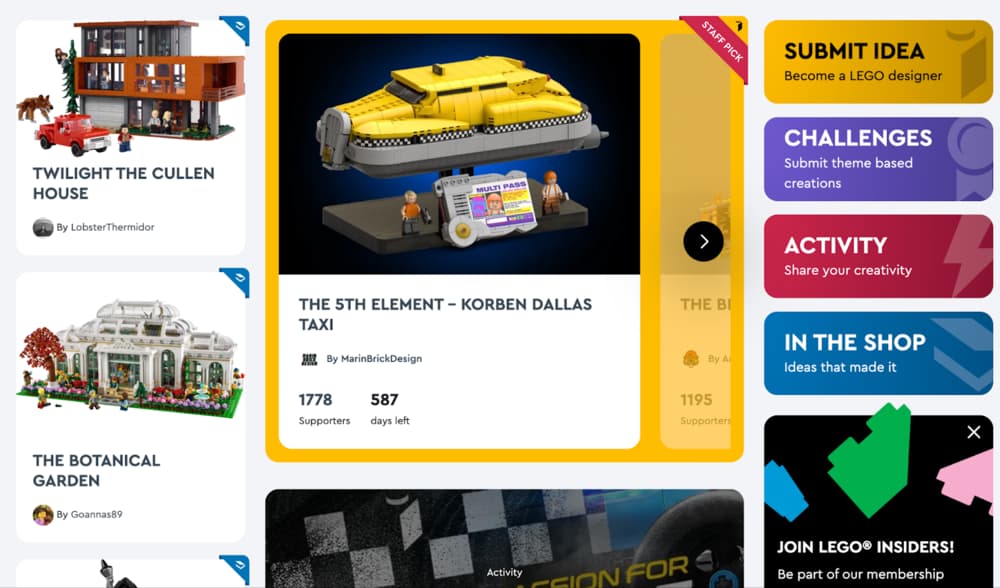
Other brands like
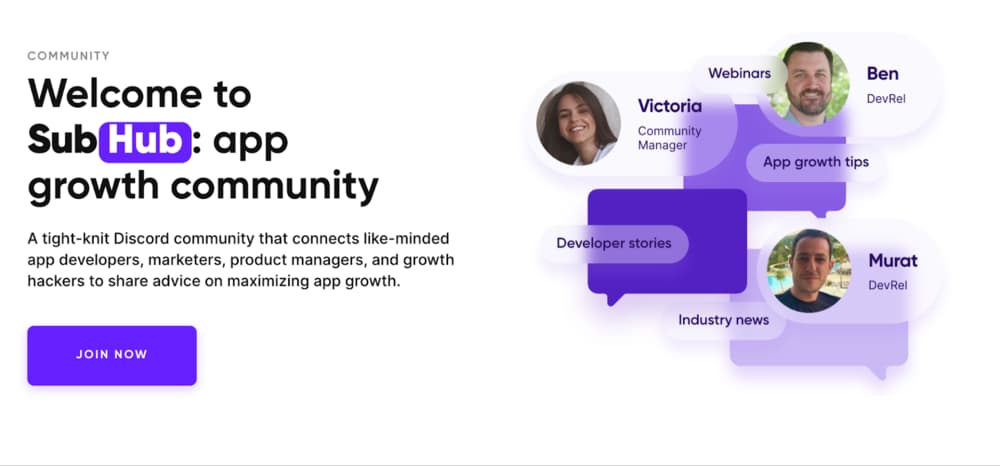
did.
Source content directly from your community
Original content is king, and your community is the secret source of authentic ideas.
You can implement the following UGC strategies:
Create specific content challenges with clear themes (e.g., "Show us how you use our product to solve problems")
Build a dedicated submission portal where users can upload content and sign digital release forms
Develop a simple review rubric with clear criteria for accepting or declining submissions
Set up a recognition system for featured contributors (badges, points, or product discounts)
Schedule regular content spotlights where you showcase community contributions on your main channels
Track performance metrics of UGC vs. brand content to demonstrate value to stakeholders
For instance, GoPro receives thousands community content submissions through their dedicated
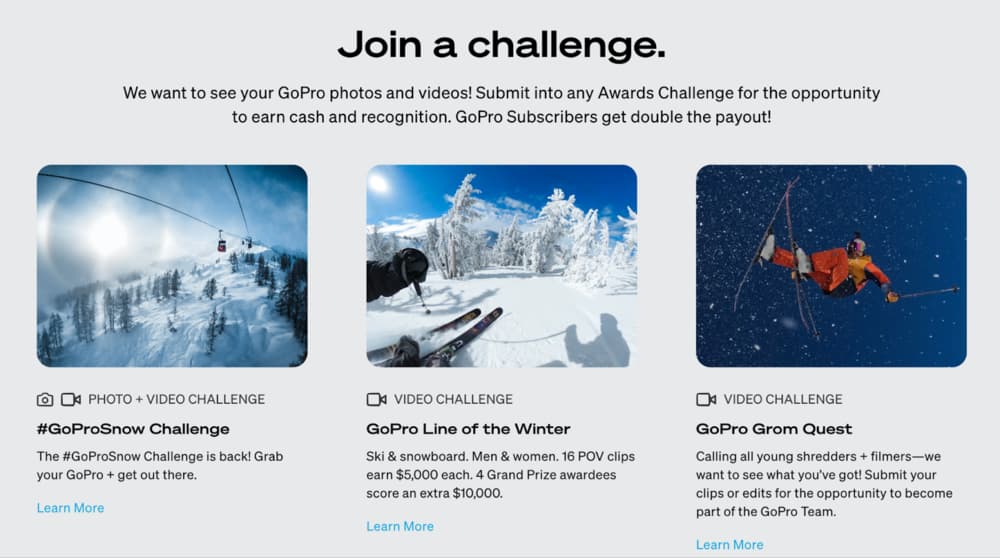
a carousel with a video by a user who recreated their logo on the sand.__CONTENTFUL_MEDIA_17__
Balance proactive and reactive engagement
Don't just wait for community members to initiate conversations—actively create opportunities for meaningful interaction with a structured approach.
Proactive engagement strategies you can implement:
Develop a proactive posting calendar with themed days (e.g., Tip Tuesday, Feature Friday)
Implement regular community challenges with clear objectives and rewards
Schedule live sessions with experts to directly engage with community members
Assign team members specific community segments to check in with regularly
Use social listening alerts to identify industry conversations where your brand can add value
For instance, GymShark posts special offers available to its social media followers:
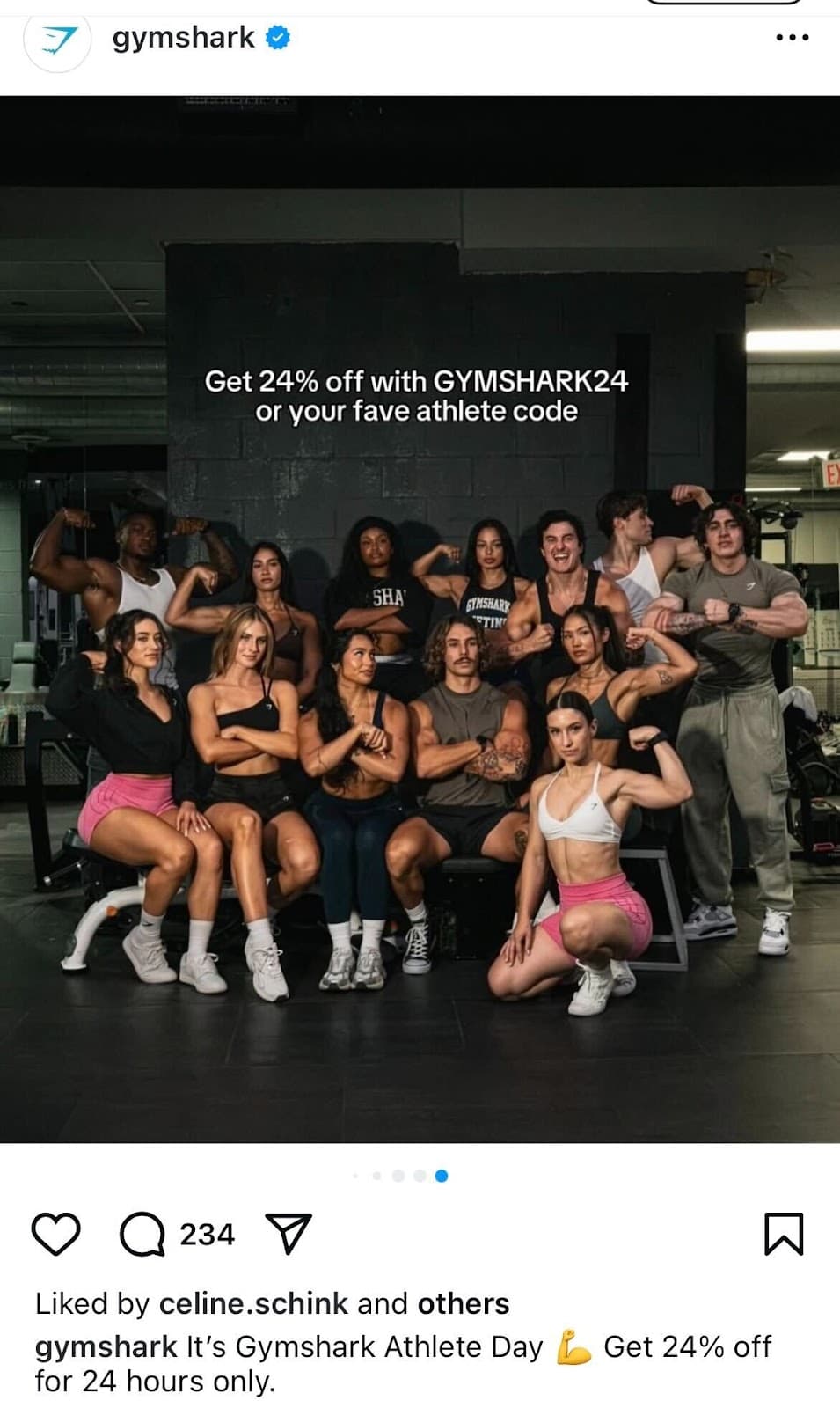
Invest in social media monitoring tools
Finally, the only way to effectively monitor social conversations is by doing it at scale.
Social listening platforms like Talkwalker capture conversations beyond direct mentions and help you automate the entire process. It offers:
Quick Search and Boolean queries to monitor untagged brand mentions
Image recognition technology to find visual references to your brand without text mentions
Sentiment analysis to detect issues before they escalate
Competitor monitoring to benchmark your community against industry standards
Real-time alerts for immediate notification of significant conversations
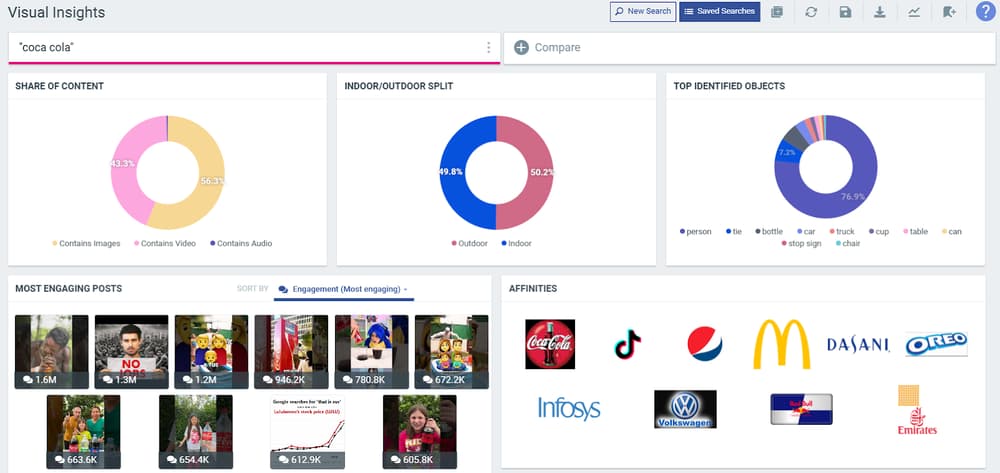
3 successful social media community management examples for 2025
Let’s review more examples of brands effectively managing and engaging their social media communities.
Starbucks’s Instagram Engagement
Starbucks uses Instagram to build community by encouraging customers to share photos of their beverages using branded
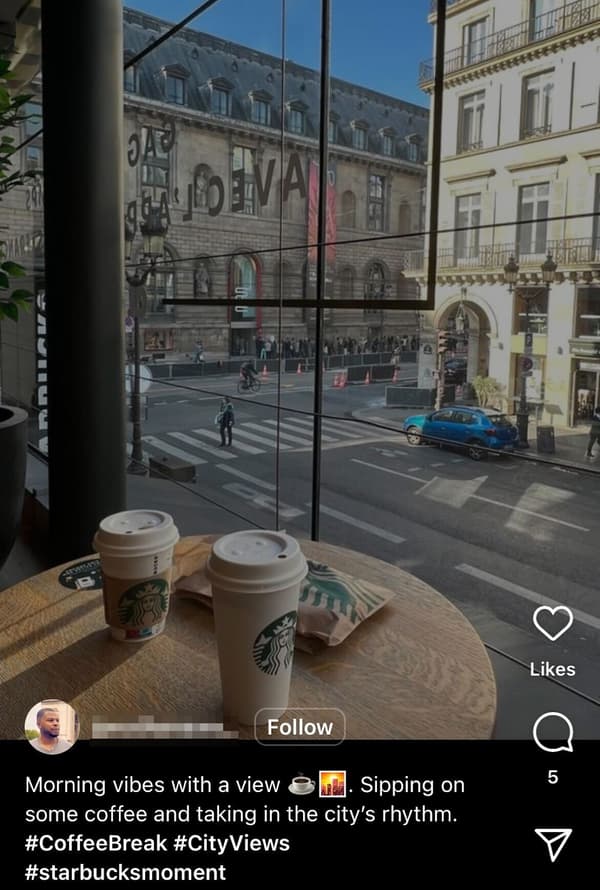
For instance, the Solutions Partner Program community brings together businesses to collaborate and grow through inbound marketing strategies.
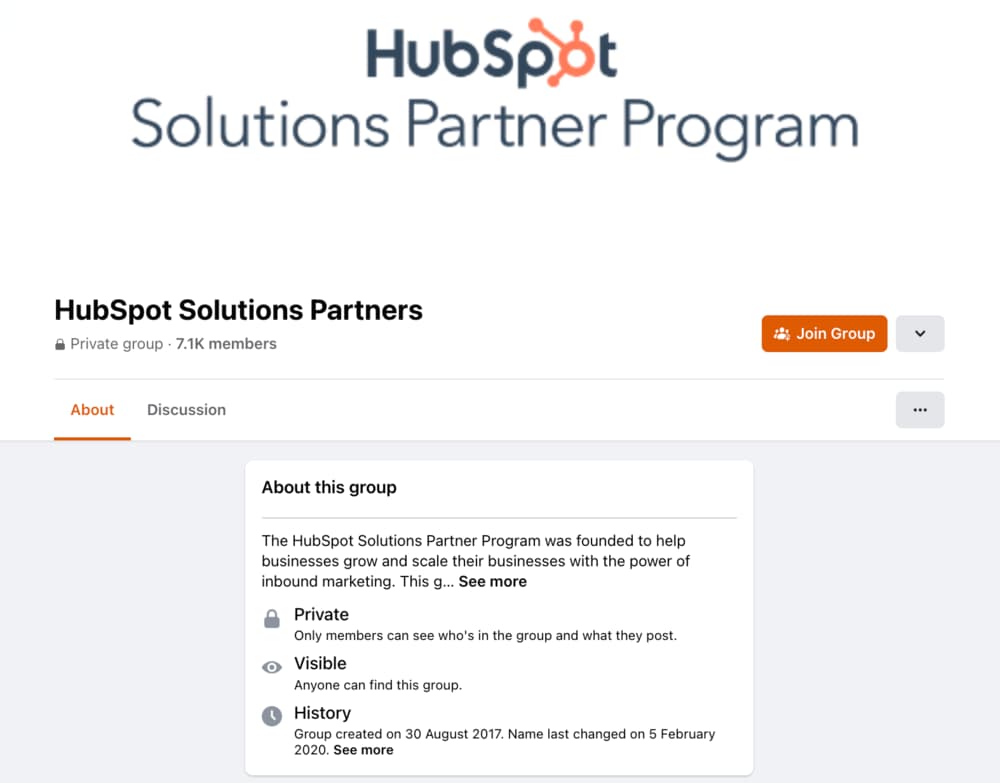
Build an engaging social media community
Brands that build genuine connections engage their customers and build a loyal owned audience.
Key takeaways from our playbook:
Align community objectives with broader digital marketing goals
Balance AI tools with human touch to nurture authentic customer relationships
Create structured processes for collecting and implementing community feedback
Develop closed communities alongside public social media accounts
Monitor sentiment analysis to identify both opportunities and potential crises
Transform community members into brand ambassadors through strategic recognition
The difference between struggling and thriving communities lies in strategic management and authentic interaction.
This approach improves customer retention while creating a network of supporters around your brand.
Ready to transform your community management approach? Get a free demo of Talkwalker and discover how our platform can help you build stronger connections.
